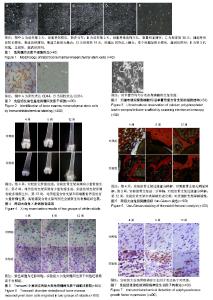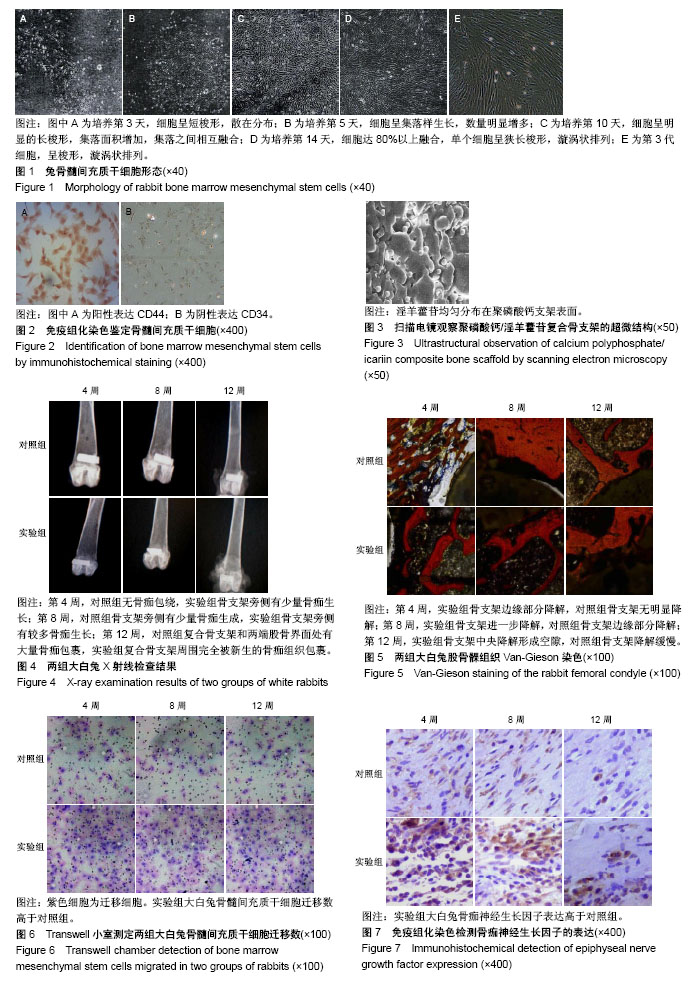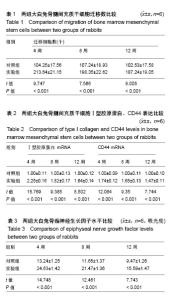| [1] Kopen'kov AV. Healing of experimental defect in a long bone after implantation of "CollapAn" osteoplastic material in its cavity (computed tomographic study). Morfologiia. 2015;147(1): 59-62. [2] Holzapfel BM, Rudert M, Hutmacher DW. Scaffold-based Bone Tissue Engineering. Orthopade. 2017;46(8):701-710.[3] Qin H, Yang Z, Li L, et al. A promising scaffold with excellent cytocompatibility and pro-angiogenesis action for dental tissue engineering: Strontium-doped calcium polyphosphate. Dent Mater J. 2016;35(2):241-249.[4] 吴曦,彭锐.不同浓度淫羊藿苷对人骨髓间充质干细胞成骨分化的影响[J].中国组织工程研究,2018,22(5):669-674.[5] Lian F, Zhao C, Qu J, et al. Icariin attenuates titanium particle-induced inhibition of osteogenic differentiation and matrix mineralization via miR-21-5p. Cell Biol Int. 2018;42(8): 931-939.[6] 杨志烈,王成龙,赵东峰,等.淫羊藿苷对环磷酰胺化疗导致小鼠骨髓间充质干细胞成骨分化障碍的保护作用[J].中国组织工程研究, 2016,20(6):777-784.[7] Sun BY, Zhao BX, Zhu JY, et al. Role of TGF?β1 expressed in bone marrow?derived mesenchymal stem cells in promoting bone formation in a rabbit femoral defect model. Int J Mol Med. 2018;42(2):897-904.[8] Vasyliev RG, Oksymets VM, Rodnichenko AE, et al. Tissue-engineered bone for treatment of combat related limb injuries. Exp Oncol. 2017;39(3):191-196.[9] Xing J, Jin H, Hou T, et al. Establishment of a bilateral femoral large segmental bone defect mouse model potentially applicable to basic research in bone tissue engineering. J Surg Res. 2014;192(2):454-463.[10] Wang X, Tang P, Xu Y, et al. In vitro study of strontium doped calcium polyphosphate-modified arteries fixed by dialdehyde carboxymethyl cellulose for vascular scaffolds. Int J Biol Macromol. 2016;93(Pt B):1583-1590. [11] Chen L, Song W, Markel DC, et al. Flow perfusion culture of MC3T3-E1 osteogenic cells on gradient calcium polyphosphate scaffolds with different pore sizes. J Biomater Appl. 2016;30(7): 908-918.[12] Wang Z, Wang D, Yang D, et al. The effect of icariin on bone metabolism and its potential clinical application. Osteoporos Int. 2018;29(3):535-544.[13] 姜文涛,梅伟,王庆德,等.淫羊藿苷对成骨细胞增殖、分化及矿化的影响[J].中华实验外科杂志,2017,34(3):446-448.[14] 陈震东,高辉,徐房添,等.淫羊藿苷促进间充质干细胞成骨分化:为治疗骨缺损提供一个良好的方向[J].中国组织工程研究, 2016, 20(50):7594-7600.[15] Li X, Peng B, Pan Y, et al. Icariin stimulates osteogenic differentiation and suppresses adipogenic differentiation of rBMSCs via estrogen receptor signaling. Mol Med Rep. 2018; 18(3):3483-3489.[16] Nakajima K, Kunimatsu R, Ando K, et al. Comparison of the bone regeneration ability between stem cells from human exfoliated deciduous teeth, human dental pulp stem cells and human bone marrow mesenchymal stem cells. Biochem Biophys Res Commun. 2018;497(3):876-882.[17] Deng Y, Guo T, Li J, et al. Repair of Calvarial Bone Defect Using Jarid1a-Knockdown Bone Mesenchymal Stem Cells in Rats. Tissue Eng Part A. 2018;24(9-10):711-718.[18] Zhang F, Peng WX, Wang L, et al. Role of FGF-2 Transfected Bone Marrow Mesenchymal Stem Cells in Engineered Bone Tissue for Repair of Avascular Necrosis of Femoral Head in Rabbits. Cell Physiol Biochem. 2018;48(2):773-784. [19] Camorani S, Hill BS, Fontanella R, et al. Inhibition of Bone Marrow-Derived Mesenchymal Stem Cells Homing Towards Triple-Negative Breast Cancer Microenvironment Using an Anti-PDGFRβ Aptamer. Theranostics. 2017;7(14):3595-3607.[20] Li F, Niyibizi C. Engraftability of Murine Bone Marrow-Derived Multipotent Mesenchymal Stem Cell Subpopulations in the Tissues of Developing Mice following Systemic Transplantation. Cells Tissues Organs. 2016;201(1):14-25.[21] 尹燕雪,李传伟,于爱莲,等. 盐霉素通过TGFβ1/Smad信号通路抑制MMP-2、9降低CD44+/CD24-/low表型乳腺癌干细胞迁移和侵袭能力[J].临床与实验病理学杂志, 2016,32(3):262-267.[22] Cao H, Heazlewood SY, Williams B, et al. The role of CD44 in fetal and adult hematopoietic stem cell regulation. Haematologica. 2016;101(1):26-37. [23] Scioli MG, Bielli A, Gentile P, et al. Combined treatment with platelet-rich plasma and insulin favours chondrogenic and osteogenic differentiation of human adipose-derived stem cells in three-dimensional collagen scaffolds. J Tissue Eng Regen Med. 2017;11(8):2398-2410.[24] Fujioka-Kobayashi M, Schaller B, Saulacic N, et al. Growth factor delivery of BMP9 using a novel natural bovine bone graft with integrated atelo-collagen type I: Biosynthesis, characterization, and cell behavior. J Biomed Mater Res A. 2017;105(2):408-418.[25] Han X, Liu H, Kuang X, et al. Silk Fibroin Improves the Release of Nerve Growth Factor from Hydroxyapatite Particles Maintaining its Bioactivity. Curr Drug Deliv. 2018;15(6): 879-886.[26] 王裕祥,王卫东,杨应忠,等.NGF、转化生长因子β1、成纤维细胞生长因子在骨折愈合中的作用效果分析[J].湖南师范大学学报(医学版),2018,15(3):95-98.[27] Chen WH, Mao CQ, Zhuo LL, et al. Beta-nerve growth factor promotes neurogenesis and angiogenesis during the repair of bone defects. Neural Regen Res. 2015;10(7):1159-1165. |



